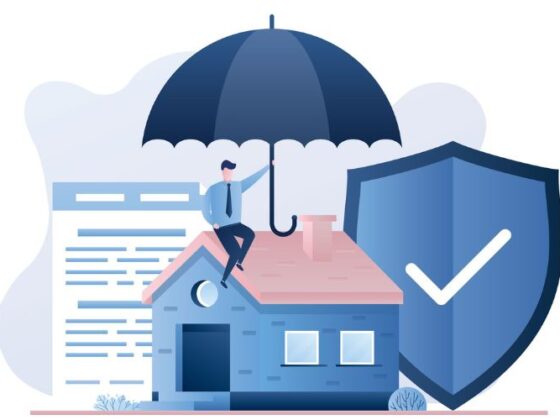The online world, especially with money on the line, attracts all kinds of shady operators. We’re talking about scam trading platforms, the kind that swoops in, take your cash, and leave you out in the cold.
No one wants that. So, let’s dig into the signs, signals, and practical steps to keep your money safe. A scam-free trading experience is possible if you know where to look. This guide gives you the tools to spot and avoid any potential pitfalls with a few hard-and-fast rules.
Key Points:
- Always check the credibility of the platform before investing.
- Look for clear and detailed terms, especially around deposits and withdrawals.
- Verify user reviews and ratings from trusted sources.
- Check the platform’s legal regulations and certifications.
- Trust your instincts; if something feels off, it probably is.
1. Red Flags in a Scam Platform

Dodgy platforms pop up with flashy ads and big promises, but not all of them play fair. A legitimate platform like Binomo offers an actual demo account for new users to learn the ropes, giving users $10,000 in demo currency to practice without real risk.
Many other platforms lure people in with fake bonuses or impossible guarantees. They say your investment will skyrocket overnight, or they promise zero risks. A reputable site will always be upfront and straightforward with realistic goals and limits, so pay close attention to what they’re saying.
2. Review the Withdrawal Policies Carefully
Scam platforms love to trap funds with so-called “withdrawal delays” or “pending verifications.” If you want to know if you’re dealing with a scam, try withdrawing your cash early on with a small amount. Legitimate platforms are known for prompt processing times and clear withdrawal policies. If a withdrawal request seems stuck for too long, and the support team keeps giving vague excuses, you’re probably looking at a scam.
| Red Flag | Description |
| No Withdrawal | Funds are “frozen” with constant delays |
| Fake Bonuses | Unrealistic incentives to keep deposits locked |
| No Support | Limited or fake customer service |
3. Research User Reviews and Ratings
When researching platforms, user reviews offer solid insights. Not all reviews are legit, though; some sites plant fake praise or complaints to skew perceptions. To make it clearer, go beyond a platform’s website. Check trusted sources where users can rate platforms on several aspects like usability, withdrawals, and customer support. You’ll see patterns with scams; they usually have multiple bad reviews about missing funds or unresponsive support.
4. Verifying Legitimacy with Certifications

Scam operators can fake logos and certificates on their websites. Real platforms often have certifications from regulatory authorities, but fake ones might sport icons that look official but mean nothing. Before putting your money anywhere, verify these certifications. Regulators such as the Financial Conduct Authority (FCA) or the Commodity Futures Trading Commission (CFTC) are authorities in the industry, ensuring platforms meet certain standards. If you can’t find any external verification, walk away.
5. Security Measures and Two-Factor Authentication
A legit platform will have robust security. Two-factor authentication (2FA) is often a must, while scam sites don’t bother with that. 2FA keeps your account safe with an additional step, like a text message or code, before any login. Many reputable trading sites use encryption to protect user data. If you notice a lack of these measures, it’s usually a sign that security isn’t a priority.
| Platform Feature | Scam Alert |
| Lacks 2FA | No extra layer of login security |
| No Encryption | Data isn’t encrypted or properly secured |
| Fake Certificate | Non-verifiable regulatory logos |
6. Customer Support Quality
If a platform doesn’t have reliable customer support, you might have a problem. Real platforms will have live chat, phone numbers, or email options for support that actually work. Scam sites either avoid support completely or have fake contacts. A good trick is to contact support with a simple query and gauge how responsive they are. An unresponsive team means issues down the line if you run into a real problem.
7. Using a Demo Account

If you’re unsure about any platform, try a demo account first. Demo accounts give you a chance to test out the platform and its features without risking real cash. Many trusted platforms, offer demo accounts with a generous $10,000 virtual balance to help users practice. It’s a smart move, letting you get a feel for the tools and trade before going all in.
8. Legal Requirements
A legitimate platform should clearly state its legal requirements. Terms and conditions, privacy policies, and user agreements should be readily available and easy to understand. Scam operators hide behind vague policies or use complicated language to dodge accountability. Real platforms have accessible, clear, and straightforward policies. They will never pressure you to deposit more money or ask for sensitive information like your full social security number.
9. Avoid Platforms Promising “Guaranteed” Profits
Guaranteed profits sound like a dream, but in trading, nothing is certain. The market doesn’t work that way, and anyone guaranteeing profits is lying. Trustworthy platforms always warn users about risks. Look for platforms that emphasize the importance of market knowledge, strategies, and calculated risks.
10. Trust Your Instincts
Finally, trust your gut. If a platform feels off, it’s likely a scam. Scammers design everything to look polished, but minor things like typos, strange layouts, or high-pressure tactics hint at a scam. Always rely on both research and instinct.


